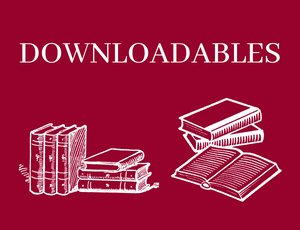Cultural perception and social understanding

Digital technologies have transformed the cultural scene profoundly. That technology has infiltrated our lives, you can now shop, bank, communicate, socialise, browse and collaborate with people on your smartphone or device. In this sense, we must know that digital culture is not only connected with the digitization of analogue terms, but it also refers to a highly dynamic space in which multimedia modalities, cross media, transmedia, augmented reality and virtual reality all coexist. However, the digital scene is not without risks.
New technologies have modified space, time, relationships and types of communication that still continue to coexist with the other fields of knowledge inherent in a culture. It is clear that new technologies imply major advantages in terms of access to culture and it is also evident that in the digital age there are many more cultural offerings than users were formerly accustomed to.
Digital culture refers to the knowledge, beliefs, and practices of people interacting on digital networks that may recreate tangible-world cultures or create new strains of cultural thought and practice native to digital networks. Digital culture is the Internet, transhumanism, Artificial Intelligence, cyber ethics, security, privacy, and policy. It is hacking, social engineering, and modern psychology (Digital Culturist, 2015).
Mobile phones are extensively used by young people and adults alike. Websites such as YouTube and Wikipedia are the first port of call for many people looking for information about a selected area of interest. TV, films and music are stored and accessed on computers, MP3 players and online. Online shopping and banking have become more dominant and government services have become increasingly internet-based. Email allows instant communication between people across the world. Both online and offline gaming feature prominently in many people’s lives and Web 2.0 technologies such as social networking sites allow people to collaborate by sharing and editing online content.
Today’s society, often called “the information age”, is marked by the rapid development of communication and information resources.
Cultural and social understanding equips you with a language and context for your digital literacy. Certainly, developing cultural and social understanding is crucial in enabling people to contribute not just socially and culturally but also politically, economically and intellectually. You need to recognise that there are certain social, cultural and historical influences that shape your understanding and learning.
How much might culture change when certain practices move online? How often can current cultural beliefs and expectations be transported to another reality? We frequently think of information and communication in a technical and instrumental way —as data and data transmission. However, information and communication are also social phenomena.
The propagation of technology not only affects social class status, but social class formation, division, and aspects that contribute to each group. Still, many persons understand less where they fall within social class as digital cultures muddle types of capital. This lack of clear identification or understanding does not diminish the significance of class hierarchy as the digital space categorizes content through aspects like class and worker issues aren’t clearly addressed through such oversight or lack of digital social class cohesion.
Digital culture and technology have formed new ways of seeing social class theoretically including immaterial labour, digital labour, informational and cultural work, “concept of free labour under conditions of the New Economy, as well as the now-famous notions of social factory” (Qiu, 2018)1.
Building global online culture via new media should focus on how radical changes are adopted by democratic rules and principles. Digital technologies, principally online spaces, provide you with opportunities for many new forms of interaction. Increasingly these interactions are mediated by different modes of representation such as images and sounds. Being able to decode these multimodal texts requires an understanding of the social and cultural practices that surround your creation.
We differentiate cultural epochs according to the communication technology used. In oral culture, knowledge transfer could only happen in direct communication. In written culture certain types of knowledge or the memory of a particular person could be preserved and written messages could be sent through space and be recorded (and preserved) for the future. The press and broadcasting culture allowed the mass distribution of messages from centralized sources. Nowadays we can refer to concepts such as digital culture, internet and its participatory nature, convergence, ambient intelligence, etc.
The effect of the communication technologies on culture is important because the way we use them can effect changes in the very essence of our cultural and communication models but although digital tools intensify your possibilities, paradoxically, the exponential growth in content offerings from around the world sometimes has the opposite effect: it results in a glut that may detract your attention.
Based on these ideas presented, think about:
- What extent do digital citizens’ skills continue to improve their communication styles and abilities via new media?
- What kind of online authentic experiences are associated with developing communication styles and abilities via new media?
- What are digital citizens’ patterns of participation in communication styles and abilities via new media?
- What are the impacts of communication styles and abilities via new?
Individuals can become active participants in their knowledge constructions rather than passive receptacles. In this constructivist milieu, digital citizens can work on complex global projects via new media.
References
1 Qiu, Jack Linchuan. 2018. “China’s Digital Working Class and Circuits of Labor.” Communication and the Public 3 (1): 5–18. https://doi.org/10.1177/2057047318755529

